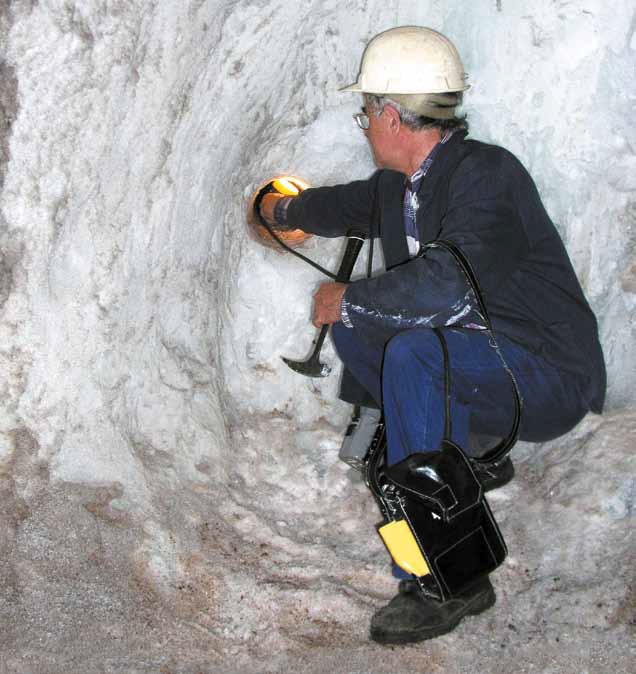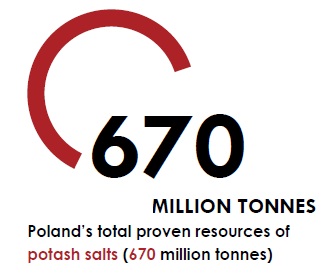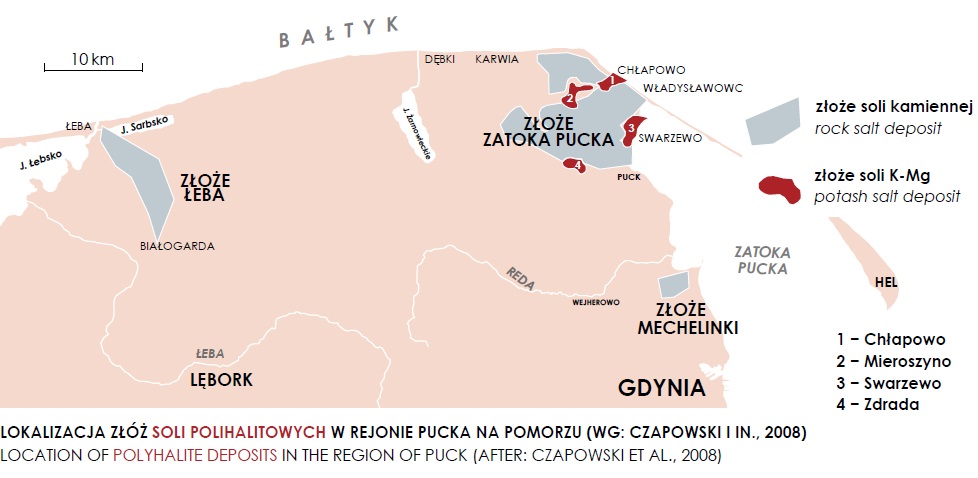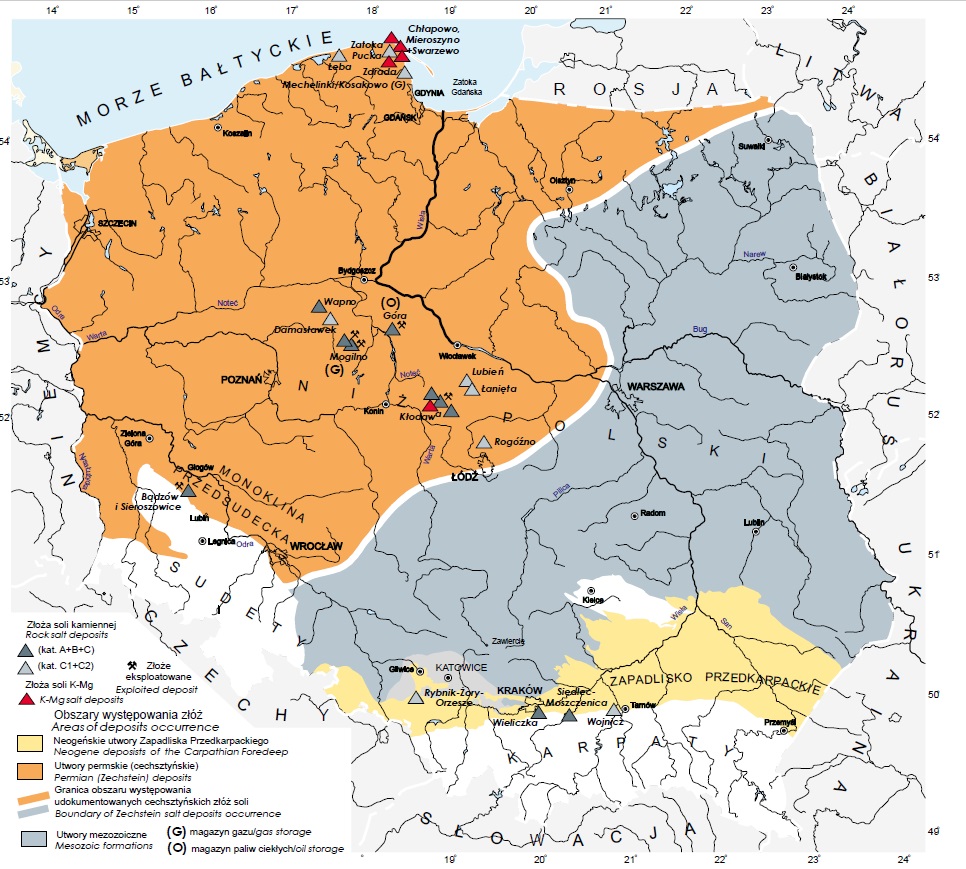Potassium-magnesium salt deposits occur in Poland alongside the thick rock salt beds that stretch under a half of the country’s surface area. These deposits of Permian age were formed 259-252 million years ago by evaporation of a shallow warm Permian sea that then covered a substantial part of present Poland, Germany and the North Sea.
Poland’s total proven resources of potash salts amount to 670 million tonnes, of which only 2,7 tonnes are economic ones.

Carnallite seam in the excavation in Kłodawa. An exp losive device is placed In The drill hole in order to crush the salt. Photo by: Grzegorz Czapowski

Sulphate salt (polyhalite) resources of 597 million tonnes have been initially proven in four deposits surrounding a rock salt deposit located near the Puck Gulf:
- Chłapowo – 32.093 million tonnes,
- Mieroszyno – 341.735 million tonnes,
- Swarzewo – 144.027 million tonnes,
- Zdrada – 79.170 million tonnes.

The deposits occur at a depth range of 740-900 m and contain from 7.7% to 13.7% K2O. The resources have been initially estimated (proving category C1) in the years 1964–1971 assuming that mineral beds are evenly distributed. However, subsequent survey have revealed that mineralisation is in the form of irregular polyhalite pockets and interbeds in the anhydrite rocks. Accordingly, the area must be resurveyed to estimate again the resources assuming other parameters of mineralisation.
Chloride (carnallite and sylvine) potash resources of 72 million tonnes have been proven in the Kłodawa salt dome (Wielkopolskie Voivodship), of which only 2.7 million tonnes are considered as economic.

The deposit is in the form of a folded and in places compressed bed, descending at a dip of 70° along the eastern boundary of the Kłodawa salt dome. The contents of K2O and MgO are on average 8.5% and 8.1%, respectively. Salt deposits contain an admixture of clays and sulphates.
Potassium-magnesium salt deposits have been reported from the Fore-Sudetic region, e.g. at Zielona Góra in Lower Silesia, but they are still to be proven.








